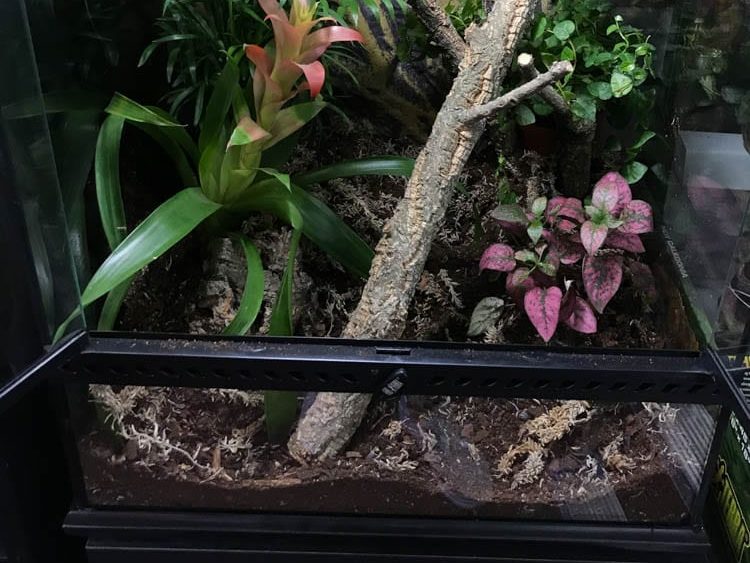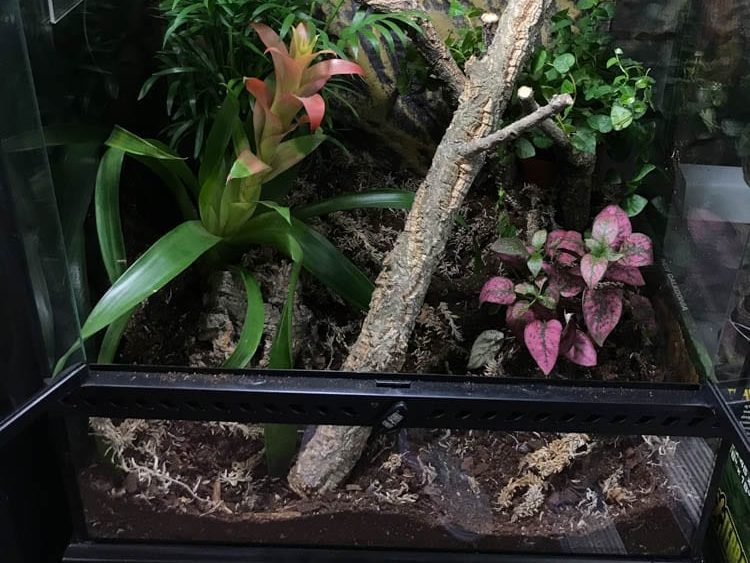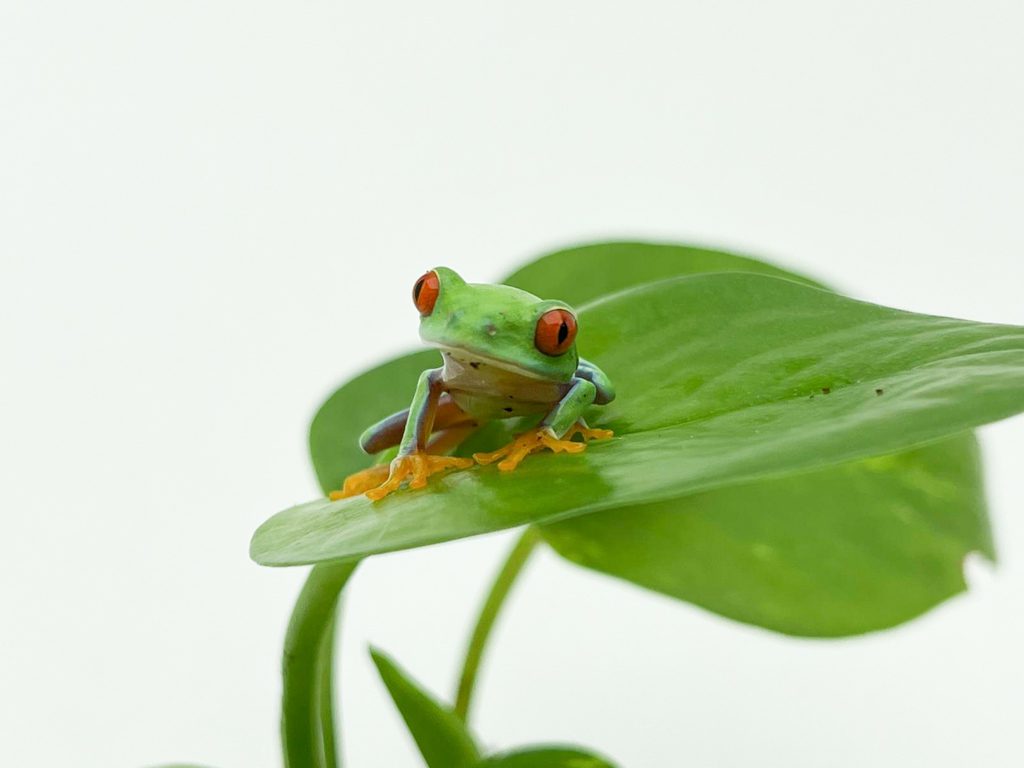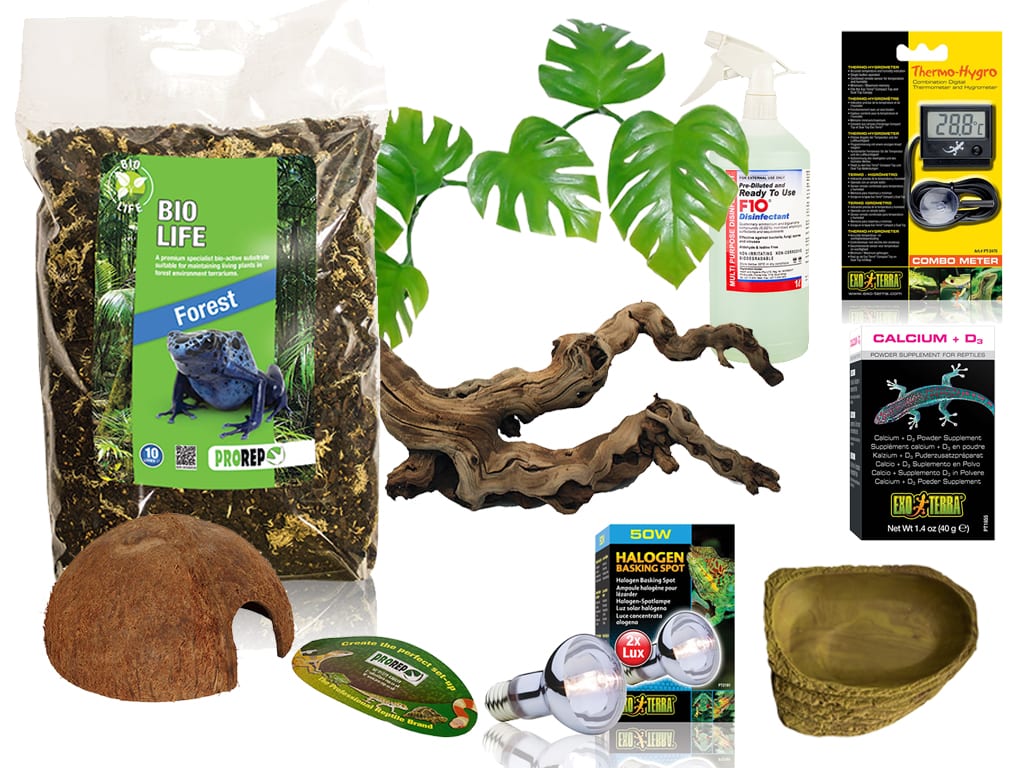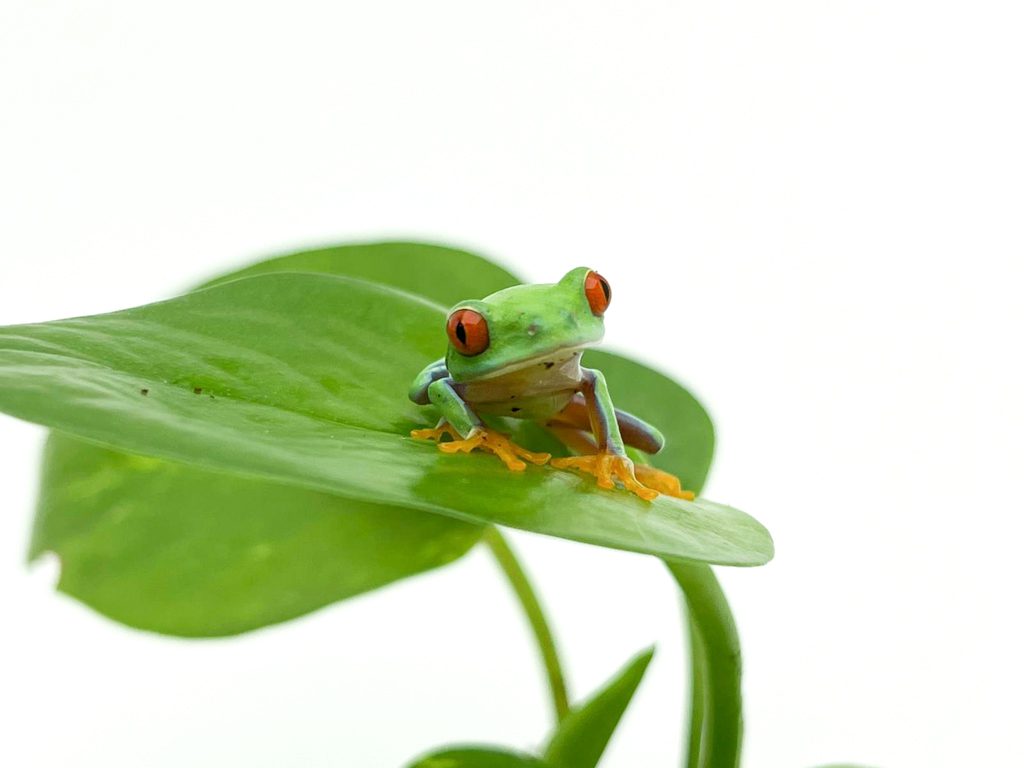
Red Eyed Tree Frog
Care Sheet

Red Eyed Tree frogs are one of the most colourful tree frogs with bright geen bodies and unmistakeable red eyes.
Red eyes enjoy a warm humid environment which replicates the conditions found in the tropical lowlands of Central and South America.
Like other amphibians, frogs are born as spawn which advance into froglets (baby frogs who have just developed their legs) and become visually stunning as adults.
Red eyed tree frogs enjoy a diet of insects, generally silent crickets but some adults will also enjoy hoppers. Their food should be dusted with supplements including D3 1-2 times a week.
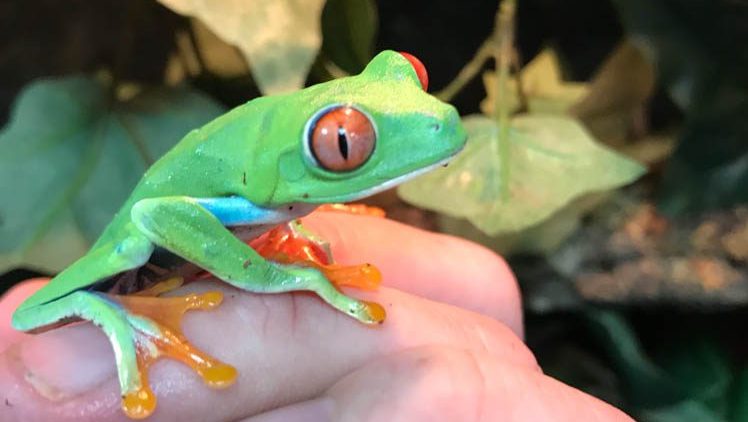

HANDLING YOUR FROG:
Frogs have very sensitive skin which produces oils to keep the frog safe. It is recommended to wear powder free latex gloves when handling your frog and be careful of your frog jumping away from your hands.
Frogs do not enjoy handling very much and should not be stroked as this can cause damage to their skin.
When picking up your frog, always ensure you are in an enclosed area to prevent escape. Whilst cleaning we recommend you move your frog carefully into a plastic tub whilst you clean the tank.
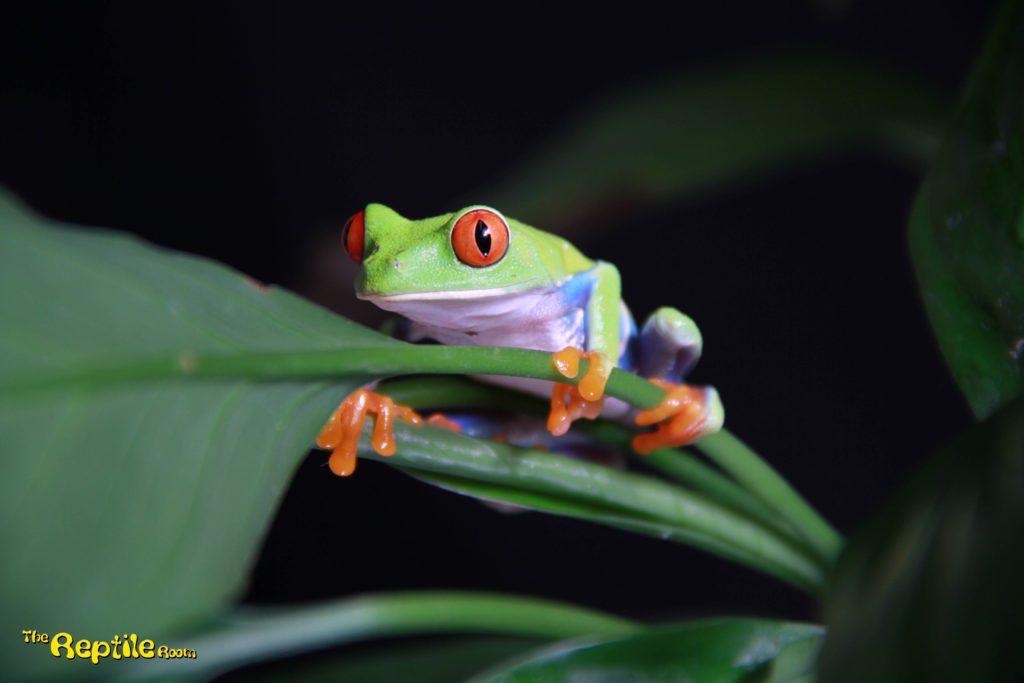

SEXING YOUR FROG
Frogs are notoriously hard to sex and it can be difficult to see the differences until adulthood.
Female red eyed tree frogs are larger than males as adults with females growing around 3inches and males 2-2.5 inches.
Males will have a brown pad at the bottom each hand. Handle your frog carefully in order to sex and always wear gloves.
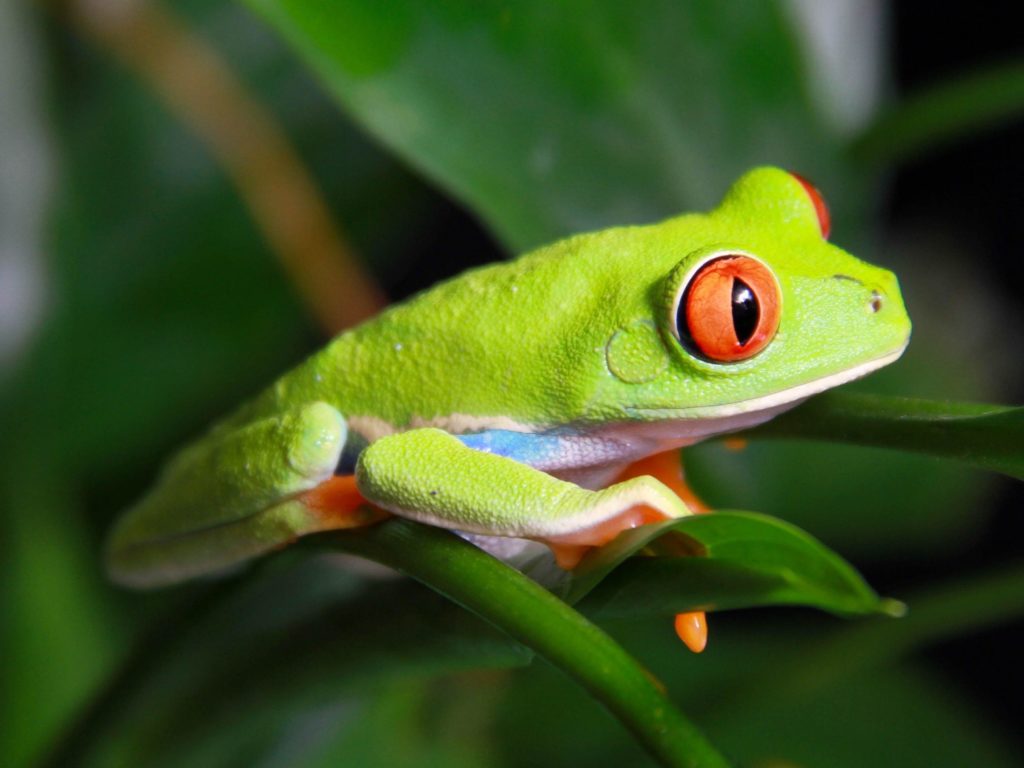

HEALTH CHECK
Eyes– Eyes should be clear and both open wide. Occasionally frogs develop eye infections which can be caused by the toxins in the substrate from it not being cleaned enough or from too much humidity in the enclosure. You can use honey diluted in non-chlorinated water on a cotton pad to bathe the eye. To prevent change substrate more regularly and ensure that humidity levels are correct.
Legs– Legs should be strong and your frog should be able to jump around. Frogs can suffer from MBD (metabolic bone disease) when they do not have enough calcium in their diet. MDB can be seen in frogs by the feet and legs looking disfigured or weak, along with the mouth gaping or hanging at the side. MDB is irreversible but adding calcium to the food twice a week will prevent further development.
Skin– Skin should look shiny and moist. If the frog does not have access to water or the enclosure is too dry you may notice a dry cocoon like shed which shows signs of the frog shutting down. Ensure the humidity in the enclosure is kept consistent and offer fresh dechlorinated water daily. Buy bottled water or leave tap water uncovered for 24-48 hours.








ADVICE FOR LIFE!
When you buy your Pet & Housing from us!
Priority Boarding | Advice available face to face, via Telephone, Facebook Chat, Email, Instagram

